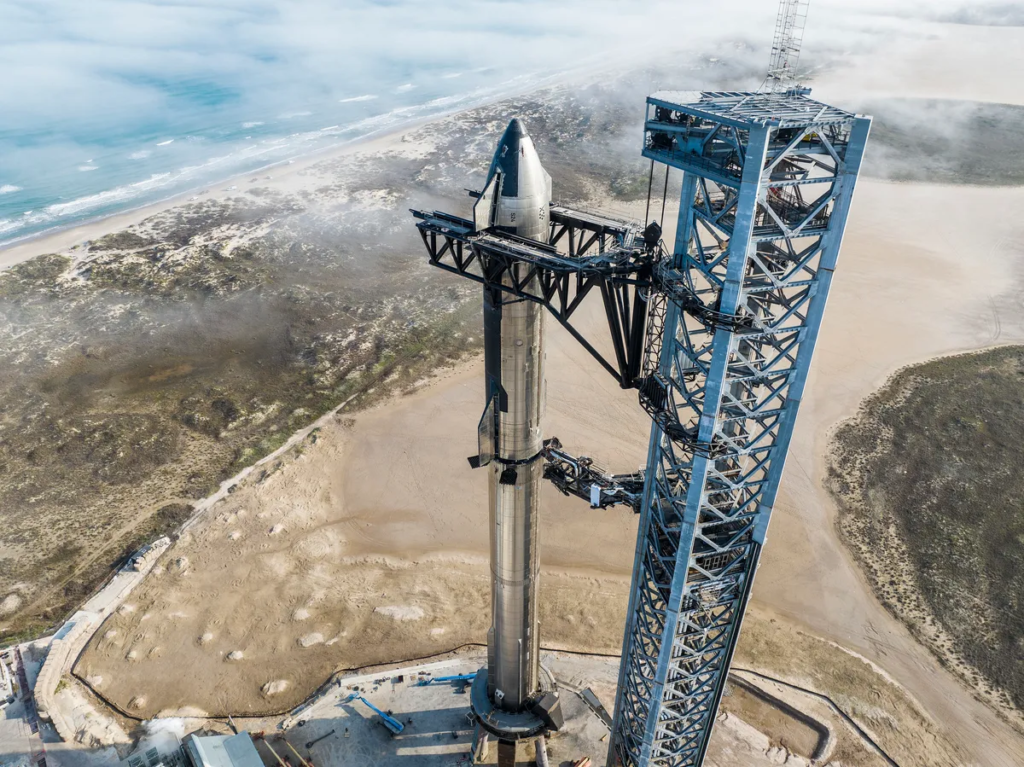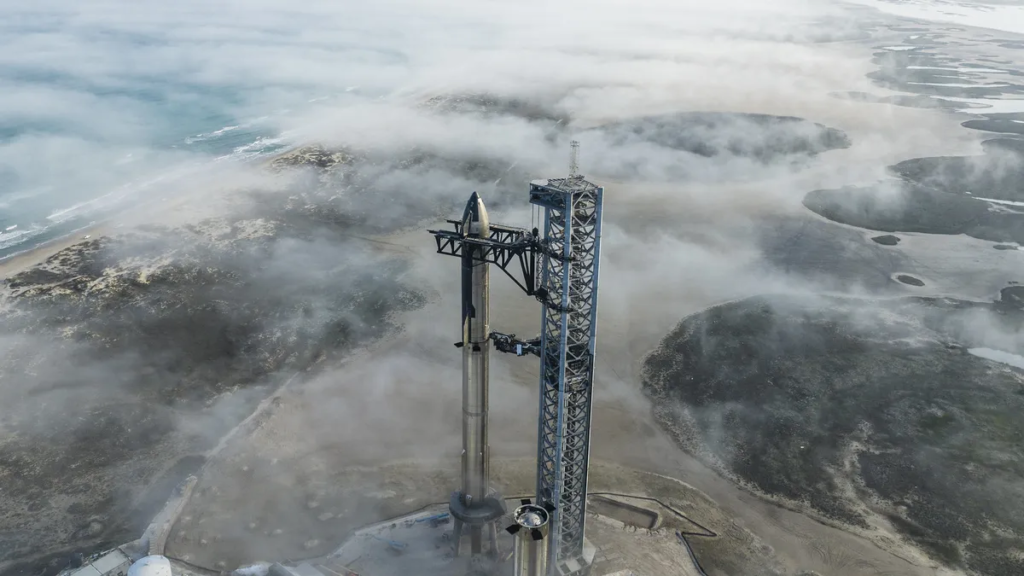
NASA’s Exact Plan To Return Humans To The Moon Using Starship
The successful launch of SLS and Orion marked a crucial first step in the goal of returning humans to the surface of the Moon. In the coming years, more and more progress is expected to be completed with even more exciting missions planned. This includes help from various contracted companies such as SpaceX with the Starship Lunar Lander.
Recently, NASA gave an update on the exact plan for Artemis II and Artemis III. Here they went more in detail regarding the operations of the lunar Starship and how that plays into various upcoming missions. As Starship prepares for its first orbital test flight expected to happen in only months, these future dates become more within reach and realistic.
Around half a century ago, humans stepped foot on the Moon and left for the last time. This time around NASA is determined to not only land on the Moon again, but setup a permanent human presence. An ambitious goal that requires an immense amount of infrastructure and collaboration. Here I will go more in-depth into Starship’s upcoming role, the overall Artemis II and III plan, what to expect in the future, and more.
Starship’s Moon Landing

Only two days ago on the 13th NASA tweeted saying, “Artemis I: Uncrewed flight test. Artemis II: Astronauts fly around the Moon. Artemis III: Astronauts land on the Moon. With #Artemis I successfully completed, we are working to send humanity to the lunar South Pole region for the first time.” Back in April 2021, NASA selected SpaceX to continue development of the first commercial human lander that will safely carry the next two American astronauts to the lunar surface.
Specifically, NASA selected SpaceX to provide the human landing system that will transport Artemis III astronauts from Orion in lunar orbit to the surface of the Moon and back again. SpaceX plans to use a unique concept of operations to increase the overall efficiency of their lander. After a series of tests, SpaceX will fly at least one uncrewed demo mission that lands Starship on the lunar surface. When Starship has met all of NASA’s requirements and high standards for crew safety, it will be ready for its first Artemis mission.
Before the crew launch, SpaceX will launch a storage depot to Earth orbit. A series of reusable tankers will carry propellant to the storage depot to fuel the human landing system. The uncrewed Starship human landing system will then launch to Earth orbit and rendezvous with the storage depot to fill its tanks before executing a translunar injection engine burn and traveling approximately six days to NRHO where it will await the Artemis III crew. From hundreds of potential orbits, NASA selected NRHO to achieve long-term Artemis goals. NRHO will provide near-constant communications with Earth and access to sites all over the Moon. Because it is gravitationally balanced between Earth and the Moon, this orbit will maximize fuel efficiency. On future missions, NASA and its partners will assemble the Gateway lunar space station in NRHO to serve as a hub for Artemis missions.
Focusing back on the mission, when both spacecraft have arrived in NRHO, Orion will dock with the Starship human landing system in preparation for the first lunar surface expedition of the 21st century. Once the crew and their supplies are ready, two astronauts will board Starship, and two will remain in Orion. Orion will undock and back away from Starship to remain in NRHO for roughly one orbit around the Moon, lasting about 6.5 days. This will match the length of the surface expedition, so as Orion completes its orbit, the two person surface crew will finish their work on the surface in time to launch back up to meet the spacecraft.
NASA has its sights set on locations around the South Pole for the Artemis era of human lunar exploration. Extreme, contrasting conditions make it a challenging location for Earthlings to land, live, and work, but the region’s unique characteristics hold promise for unprecedented deep space scientific discoveries. Using advanced technology including autonomous systems, the crew inside of Starship will land at a carefully selected site within a 100-meter radius. This completes the first part of the mission on Starship’s side.
Starship’s Return To Earth

Now that we know more about Starship’s journey to the Moon and its landing process, we can take a closer look at the final mission profile utilizing this specific launch vehicle. NASA highlights that after touchdown, the surface crew’s first task will be to ensure all systems are ready for their lunar surface stay. Then they will rest, eat, and recharge for the first full day of the expedition. During their time on the Moon, the astronauts will do scientific work inside Starship and conduct a series of moonwalks, exiting Starship to explore the surface. The astronauts will don advanced spacesuits, exit through an airlock, and descend on Starship’s elevator. NASA has selected Axiom Space to provide the Artemis III surface suits and spacewalk systems. These suits will give the astronauts an increased range of motion and flexibility to explore more of the landscape than on previous lunar missions.
During their moonwalks, the astronauts will take pictures and video, survey geology, retrieve samples, and collect other data to meet specific scientific objectives. The view from the lunar South Pole region will look very different from the photos taken on Apollo missions in the Moon’s equatorial region. The Sun will hover just above the horizon, casting long, dark shadows across the terrain, which the crew will explore using headlamps and navigational tools. The information and materials collected by Artemis III astronauts will increase our understanding of the mysterious South Pole region, the Moon, and our solar system.
Mission control teams on the ground will be in contact with the crew as they relay what they see, hear, and feel. Through mission coverage and the ability to send high quality images and video to the ground with advanced communication technology, they will be sharing a unique new human experience with the world. When their surface expedition is complete, the two astronauts will lift off the surface of the Moon and head back to NRHO in Starship to reunite with their crewmates in Orion. After docking, the crew will spend up to five days in orbit, transferring samples between the vehicles and preparing for the journey back to Earth.
When they reach the optimal NRHO departure point, with all four astronauts back in Orion, they will undock and ignite Orion’s engines, slinging the spacecraft past the Moon, and allowing it to coast toward Earth. The crew will travel about 24,855 miles (about 40,000 kilometers) per hour during reentry into Earth’s atmosphere. Assisted by 11 parachutes, the spacecraft will splash down in the Pacific Ocean where it and the crew will be retrieved with support from the U.S. Coast Guard and U.S. Navy. Artemis III will be one of the most complex undertakings of engineering and human ingenuity in the history of deep space exploration to date. The astronauts’ observations, samples, and data collected will expand our understanding of our solar system and home planet, while inspiring the next generation. This mission is hoping to usher in a future in which humans consistently access the Moon, and human planetary exploration missions are within reach. Each Artemis mission is expected to increase knowledge, refine operations, and prove technology as they prepare for the first human mission to Mars.
As partially mentioned prior, around a year ago, SpaceX was selected by NASA for the Humans landing system contract. The firm-fixed price, milestone-based contract total award value is $2.89 billion. SpaceX’s HLS Starship, designed to land on the Moon, leans on the company’s tested Raptor engines and flight heritage of the Falcon and Dragon vehicles. Starship includes a spacious cabin and two airlocks for astronaut moonwalks. The Starship architecture is intended to evolve to a fully reusable launch and landing system designed for travel to the Moon, Mars, and other destinations.
Right now, Starship is making impressive progress toward its first orbital launch attempt. Just over a week ago on January 7th Elon Musk tweeted mentioning, “We have a real shot at late February. March launch attempt appears highly likely.” This was referring to a possible upcoming launch date for the Starship test article. Starship is the fully reusable spacecraft and second stage of the Starship system. It offers an integrated payload section and is capable of carrying passengers and cargo to Earth orbit, planetary destinations, and between destinations on Earth. The first stage, or booster, of the next-generation launch system has a gross liftoff mass of over 3 million kg and uses sub-cooled liquid methane and liquid oxygen (CH4/LOX) propellants. The Starship payload fairing is 9 m in diameter and 18 m high, resulting in the largest usable payload volume of any current or in development launcher. This payload volume can be configured for both crew and cargo. Something we can look forward to seeing in the near future.
Conclusion
NASA is hard at work preparing for Artemis II and II now that Artemis I has been completed. With these future missions comes help from contracted companies such as SpaceX with the addition of the Starship Human Landing System. In the coming months, we can hope to see a successful first orbital test flight of this vehicle as it continues to make history. We will have to wait and see how it progresses and the impact it has on the space industry.
